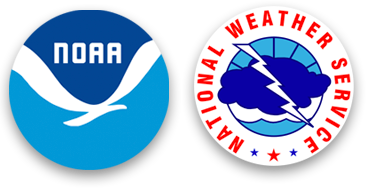Dr. Robert White - Weather Bureau Chief and NOAA’s First Administrator - National Weather Service Heritage
.jpg)
Dr. Robert White - Weather Bureau Chief and NOAA’s First Administrator
By Emily Senesac (emily.senesac@noaa.gov)As is so often the case, one of the most trying elements of leadership and service is balancing expectations. Often, a leader is thrust into a situation where he or she must focus on two important things -- past standards must be upheld, yet expectations for the future must also be met or exceeded. If the leader is successful, both can be achieved. One such leader was Dr. Robert M. White, former chief of the US Weather Bureau and the first NOAA Administrator.
Born February 13, 1923 in Boston, Massachusetts, White’s first exposure to meteorology occurred during his college years at Harvard University. At that time, Dr. Charles F. Brooks, a founding member of the American Meteorological Society, was a professor of geography at the institution. After Dr. Brooks inquired, White became a weather observer at Blue Hill Observatory, where he spent a summer studying nephanalysis, or the analysis of clouds.
That summer, in addition to his service in the Army Air Corps during World War II, launched a career in meteorology that culminated in 1963, when he was appointed to be the chief of the US Weather Bureau by President John F. Kennedy -- one of the last appointments made before his assassination. Just two years earlier, in 1961, Kennedy had taken a firm stance on the future of meteorology in a passionate appeal to the United Nations, during which he called for international collaboration in order to improve forecasting across the globe.
Taking the job upon the retirement of iconic Weather Bureau Chief Dr. Francis W. Reichelderfer, who served 25 years, White was tasked with maintaining the established standards and furthering the legacy of his predecessor. Among pressures from the past, Dr. White was also in a position to look ahead to the future -- the recent establishment of operational Numerical Weather Prediction models and the development of satellites meant that the field of meteorology was rapidly expanding. It was White’s job to make sure that the Weather Bureau was keeping up.
After White had served just two years as director of the Weather Bureau, the Environmental Science Services Administration (ESSA) was created under the US Department of Commerce to study the environment, including the weather. Although the Weather Bureau maintained its status as an independent agency, the position of chief of the Weather Bureau was abolished. As he was an instrumental figure in the creation of ESSA, White became the Administrator of ESSA in 1965. Shortly thereafter, White was instrumental in bringing about the creation of the National Oceanic and Atmospheric Administration (NOAA) in 1970, and became its first Administrator. As part of this reorganization, the Weather Bureau was renamed the National Weather Service.
Over the course of his time at NOAA, White ushered in an era of growth and prosperity -- not just in the field of meteorology, but for environmental causes far and wide. “Weather” satellites, for example, became “environmental” satellites, serving a wide variety of environmental purposes across the agency. NOAA was and is an environmentally-integrated agency, a founding principle that White understood.
White served as the administrator of NOAA until 1977. He would go on to serve other leading environmental and engineering organizations. Widely recognized as the leader who helped catalyze the modernization of NOAA and the National Weather Service, White is credited with fostering a culture of observation, understanding, and environmental interaction for the betterment of weather forecasting. In his efforts to improve global observation and forecasting technologies, White was able to maintain the high standards of the past as he brought the agency firmly into the present, all while looking ahead to the future of NOAA and the NWS.
Additional Reading:
